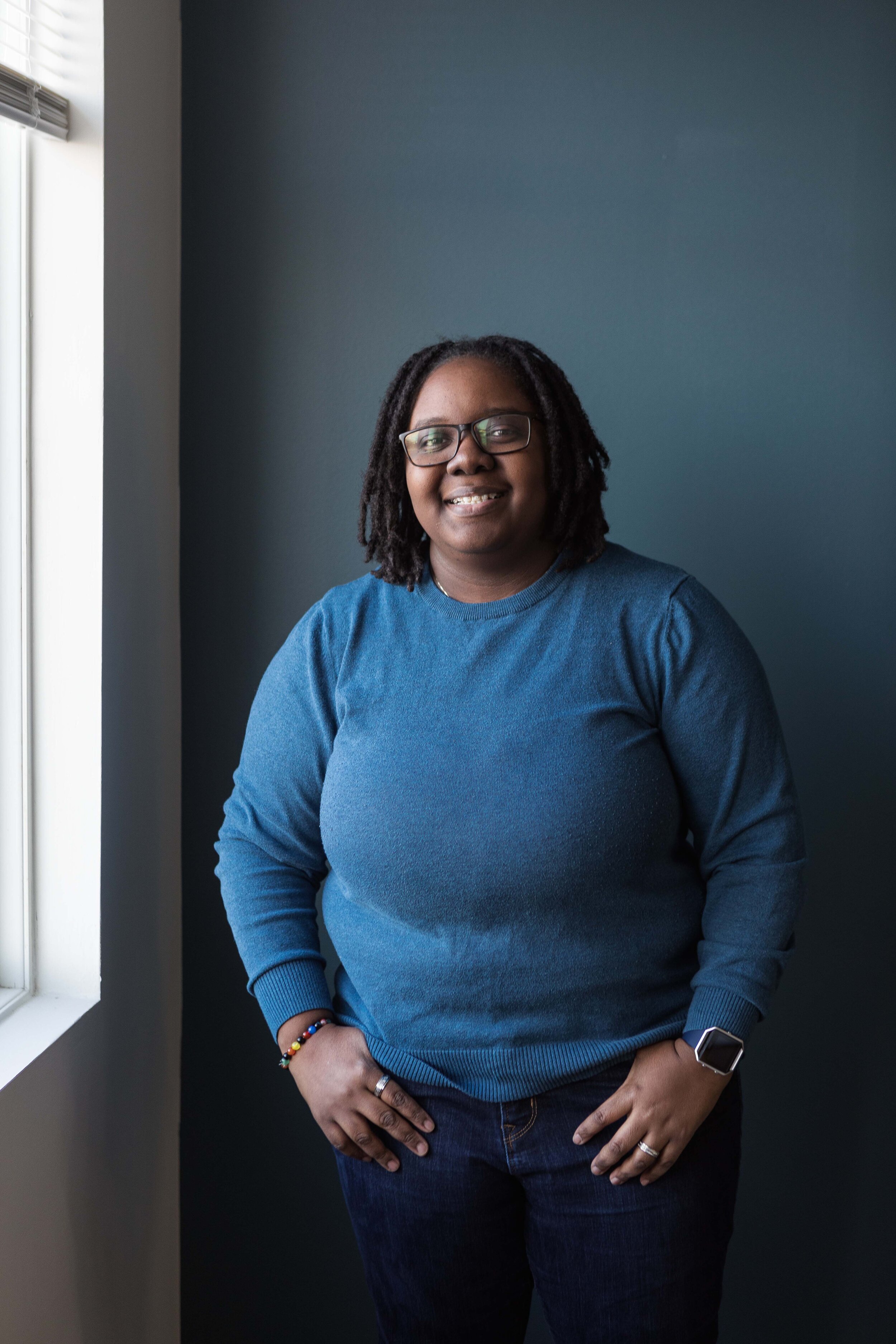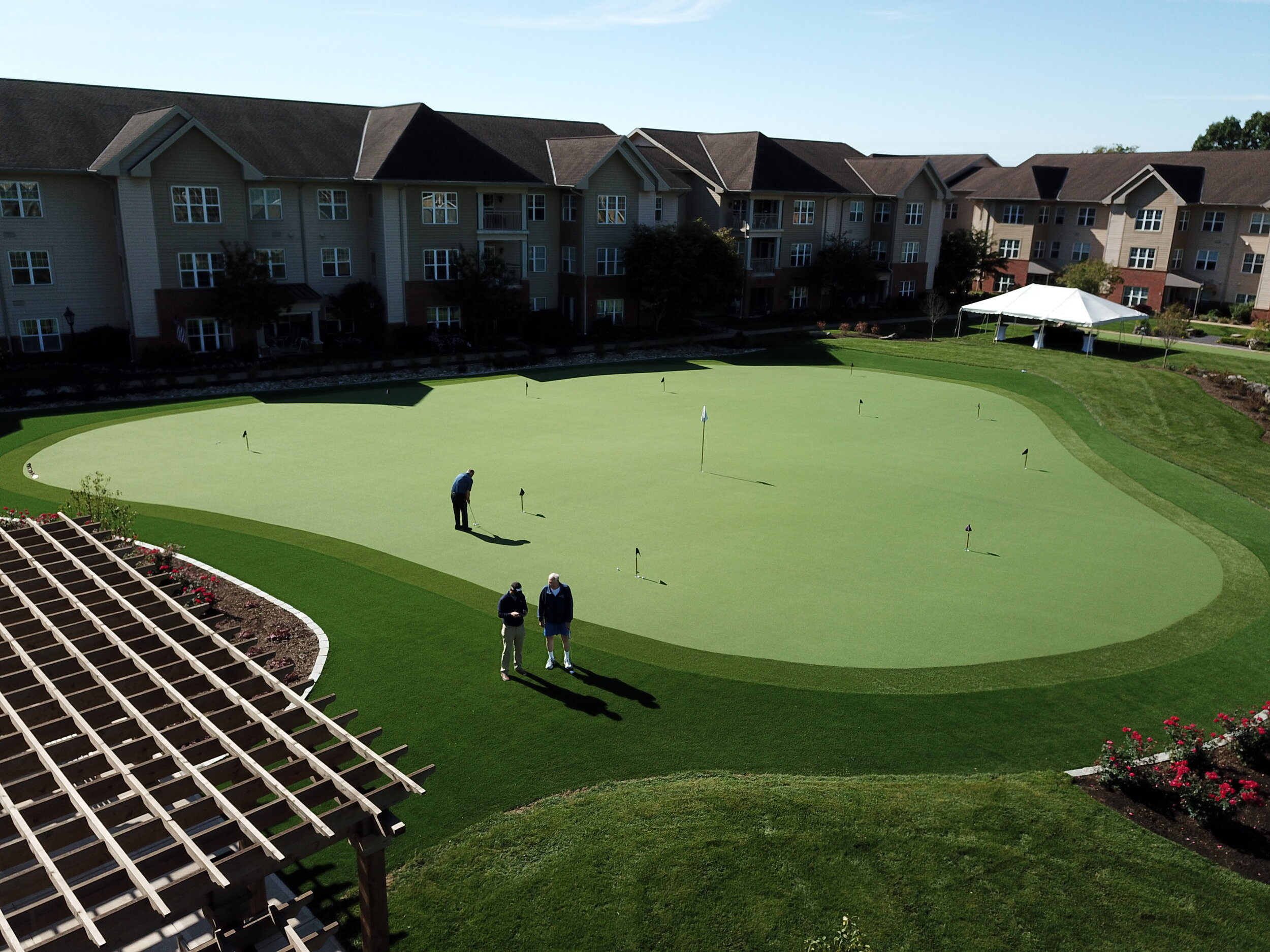By: Alexandra Cohl
Interview with Shernise Richardson: Project Design at JSR Associates, Residential Assisted Living (RAL), and person-centered approach.
This week, I spoke with Shernise Richardson, the Project Designer at JSR Associates. Shernise explained the meaning of Residential Assisted Living and how it differs from larger scale assisted living facilities. Throughout our talk, she also explained how essential it is to take a person-centered approach to design, what one of her favorite projects has been, and the unexpected challenges that happen throughout the design and building process.
This interview has been edited for clarity and flow.
Shernise, thank you so much for joining me today. I want to jump right in and give our readers a sense of who you are and what the work that you do. Can you describe what your role is at JSR Associates and what a typical week might look like for you?
Yeah, no problem at all. Thanks for having me. I am the Project Designer for JSR Associates. So, typically my work week looks like a number of things—I wear a few hats. I’m often producing the drawing sets for any of the projects that we have, whether that’s for new construction or renovations. Sometimes we do a bit of consulting work, as far as reviewing some other projects to make sure they meet certain things that are related to senior living, person-centered care, and things of that nature. So, in my role, I talk a lot with clients. A project manager is everything, so I’m basically the lead person when it comes to drawing projects and production.
Cool. I was just going to say that it sounds like you’re the producer of what goes on.
Shernise and Jane working on art install placement.
Yeah, and we’re a small family firm. When I came to this firm, I was like, “Man, this is awesome,” because it introduces you to a lot of different things that you might not get to experience at larger firms. So, getting to interact with a lot of different people has definitely been a great part of this firm.
That’s awesome. So, one of the things I wanted to ask you about today is the term Residential Assisted Living (RAL). Could you explain that term, for those of us who don’t know what that is, and what it encompasses?
Yeah, so Residential Assisted Living is your typical assisted living but scaled down to a single family-home style. So, basically, taking everything that you would normally see from a facility that’s like 64 units or something like that and fitting it into a single-family home where it’s more of a family-style oriented type of facility. With that, it’s often one main kitchen that everyone shares, not kitchenettes or anything separate, and it’s a home. You have your living room setting, your dining room, people eat together, and have fun in one common living space.
Gotcha. So, it’s like a separate home building, not say my grandparents’, for example, who live in an independent living residential space that is an apartment connected to others down a hallway to these other buildings. What you’re explaining is an actual home that’s separated by maybe a yard or something.
Right. And within that home, everybody has their own individual rooms and individual spaces. All of the resident rooms that we design have their own bathrooms. We still give the residents that amount of privacy, which is what they prefer. But it’s not apartments, nothing like that. You see all your housemates every single day. It’s literally a house.
And are the people who are living in the house blood relatives, or is it sometimes just other people who are living within that home. Or, is it a mix depending on the situation?
Typically, it’s all individuals who are not related. Like, if you had an assisted living building and it was separate apartments, instead of it being apartments, it is just people living in individual rooms. You could have a space with maybe somebody related, but they would still have their own individual room.
Gotcha. It reminds me a little bit of, say, the fancier suites that some people at college would get. In terms of the work that you do at JSR, how does this term specifically apply to that work and what process do you go through when you’re working with clients on something related to Residential Assisted Living?
The way it relates to us is we are very focused on person-centered care, and senior living is almost, I would say, maybe 95% of what we do and what we focus on. The way that Residential Assisted Living fits in is that it’s almost like a household model, and so, we do that when we’re working with other clients on larger assisted living projects. We always recommend a household setting and basically having groupings of just a small amount of maybe eight people (no more than ten) where they all share the same common space. That’s helpful from a staffing perspective, as well as the resident to sometimes have that more focused, smaller grouping of individuals rather than feeling like they’re just in a large grouping.
Evermore Senior Living– Woodbridge, Virginia
Small Household living room
Where that fits in for us is that we do household design for a common space with a significantly smaller staffing to resident ratio. We take all of that knowledge, and we just pack it into Residential Assisted Living based on our knowledge, the materials, spacing requirements, spacing recommendations, and getting a better understanding of how the residents would like to experience their space. With a project, since you asked about the process, we typically do programming for a project before even starting with drawings. So, we’ll meet with the client, discuss their wants and needs and what they require. If it’s a new build, of course, they are not going to have any residents yet. Meeting with the residents is not always an option. That’s when our knowledge has to come into play to let that client know, from other projects, what we’ve experienced with other residents from other facilities.
If it’s a renovation of one, then we will meet with the actual residents and speak with them without staffing present or their children. It’s just the residents by themselves speaking their mind about how they feel about their space: what they need, what they like, what they don’t like. We take all that into account, and a lot of projects can be made better if we just simply talk to the people who are using the space, instead of relying totally on what we’ve learned through books or something like that. When you just talk to people, it makes a big difference.
So, we do the programming process, talk to the client, listen to their needs, their wants, and then we basically let them know based on our knowledge level, what we think would best benefit them for their project as far as staffing or anything operational. We’ll start there, and then we’ll go into some of the design process, schematics, and space requirements. When you start to put pencil to paper, that’s the fun part. When you’re starting to really flesh out your ideas. From that process, we go from making sure that the client is happy about what they’re looking at: “Does this meet all of your needs?” Sometimes the understanding of what may be needed for a resident is not always understood. But, we sit down and talk to the client about why we made this decision or why we recommend laying a space out the way that we do. A lot of them say, “Well, I never thought about it that way.”
Thinking about something as simple as a nightlight. One thing I would definitely include in their rooms is a through-wall nightlight that directs you to the bathroom. It is a light fixture, and it’s recessed into the wall—it’s essentially a nightlight. We place it on the same wall or near the opening where the bathroom is. That way, if they wake up in the middle of the night, and it’s dark, they see the light and they’re like, oh, the bathroom’s that way. Sometimes that can cause a lot of issues and that helps with less incontinence issues. So, something as small as that that the client never thought about before.
Oh, I like that. The nightlight reminds me of the lights you would find on the outside of a front door so people can see where to enter. The person-centered approach is just so, so important. I love that you gave the simplest example because it shows how much the needs of these people can easily be missed. And so, I’m curious, out of the many projects that you’ve worked on, are there any specific ones that come to mind that stand out for whatever reason, whether it was just a certain part of the process or the end result or anything outside or in-between that?
I would say of all the projects—every project in itself has something within it that I’ve learned that’s helped me prepare for the next one. It’s something as simple as a small detail. As far as a specific project, I would say Evermore Senior Living. That’s one that we’ve just recently completed and the first house is actually built already in Virginia and they started getting residents in. That process was very interesting to me. I love construction site visits. You get to see the thing that you put on paper actually come to life. And so, as I was doing the construction site visits, it would just be small things that come up that you have to think about right there on the spot. Like, okay, what is the way that we can fix this? Or, what is the best way to go about this? Even though it might deviate a little bit from the drawings, like something as far as spacing might come up, I may ask myself, “How do we change this to where it won’t affect the resident that much but will essentially give us what we need?” A couple of things like that came up with that project and it allows you to go back to the drawing board and basically think about your next one. Like, let me put that in my brain bank and that’s what Evermore did for me as I continue to do those site visits. It was the most site visits I’ve ever done for a project. So, getting to experience that was very rewarding and that’s why that one sticks out the most to me.
Evermore Senior Living– Woodbridge, Virginia
Construction site visit
A rendering of a resident room. Rendering by Shernise Richardson
The completed resident room. Photo by Nicole Lowder
I love that you mentioned a little bit just now about particular challenges and what they have taught you for future projects down the road. Can you expand on that just a bit? If there’s any other challenges that you’ve specifically gone through while you’ve been doing this type of work, and how you overcame those challenges.
I don’t think a lot of people think about this, but bathrooms and kitchens are some of the most difficult things to design. If you haven’t realized in those two spaces we do so many things. So, just being able to design for a space that anything possible could happen: you know with a bedroom, you’re sleeping or you may have a desk in there, but with bathrooms, especially for senior living, we have to take into account grab bars. But not just your traditional setup of grab bars. We typically go with the drop-downs, and with the drop-downs, that allows the user to push themselves up rather than the traditional setup that’s on the side or the back wall. So the drop-downs and the grab bars that can be used by different individuals.
So, with grab bars, we have the ones that adjust up and down, to the side. You have to think about counters, storage, things like that. Showers! Just something as simple as the entry to a shower and making sure it is a level transition with no bumps or anything like that. You wouldn’t think about how much just that little spacing, that little bump, can cause a tripping hazard. So making sure there’s no level change or transition, but the detail of how the floor meets the shower insert. Sometimes we have one-piece showers, and your flooring has to meet right up so that water doesn’t escape into the bottom. That detail is very delicate. It has to be so specific. Especially if it’s slab on grade—that’s basically your concrete. They had to cut into the concrete in order to set the shower inserts inside the concrete and make sure it is level with the floor. It was like me, sitting at the drawing table for hours, pulling my hair out. So, that was one of the things that I experienced with one of the projects.
It takes a good amount of your time. Something just that finite, even if it’s off by a 16th of an inch. It can really cause an issue. So, we sat there for hours and finally figured it out. Then we just decided to put an extra detail, almost like a collapsible dam that is rubber. So, if you step on it, it flexes with your foot and doesn’t cause you to trip. You can also wheel over it. It gave a way to also keep more of the water in. We had to figure out solutions to something that small, and it can take a good amount of time just to make sure that we’re getting it right for the resident. You want them to be comfortable and also make sure it meets their needs. But also, design-wise and structure-wise, we didn’t want water getting into the flooring and things like that because that can cause issues down the line (as far as replacing materials). When it comes to bathrooms and kitchens, those are the spaces where you learn the most.
It’s very much clear to me, as someone who has no idea how the intricacies of this work works, how creative and innovative you have to be while you’re considering how to make this space work for the actual humans that are going to be using it day in and day out.
Yes, yes. When we’re thinking about the single family, we’re not just designing this space for a single family. It’s a project for a client that’s going to have multiple tenants. And, sometimes there’s going to be some changeovers. So, that’s a different person coming into that space. And, we have to make sure that that space serves everyone—not just the typical, single family.
Listen to the Podcast!






















